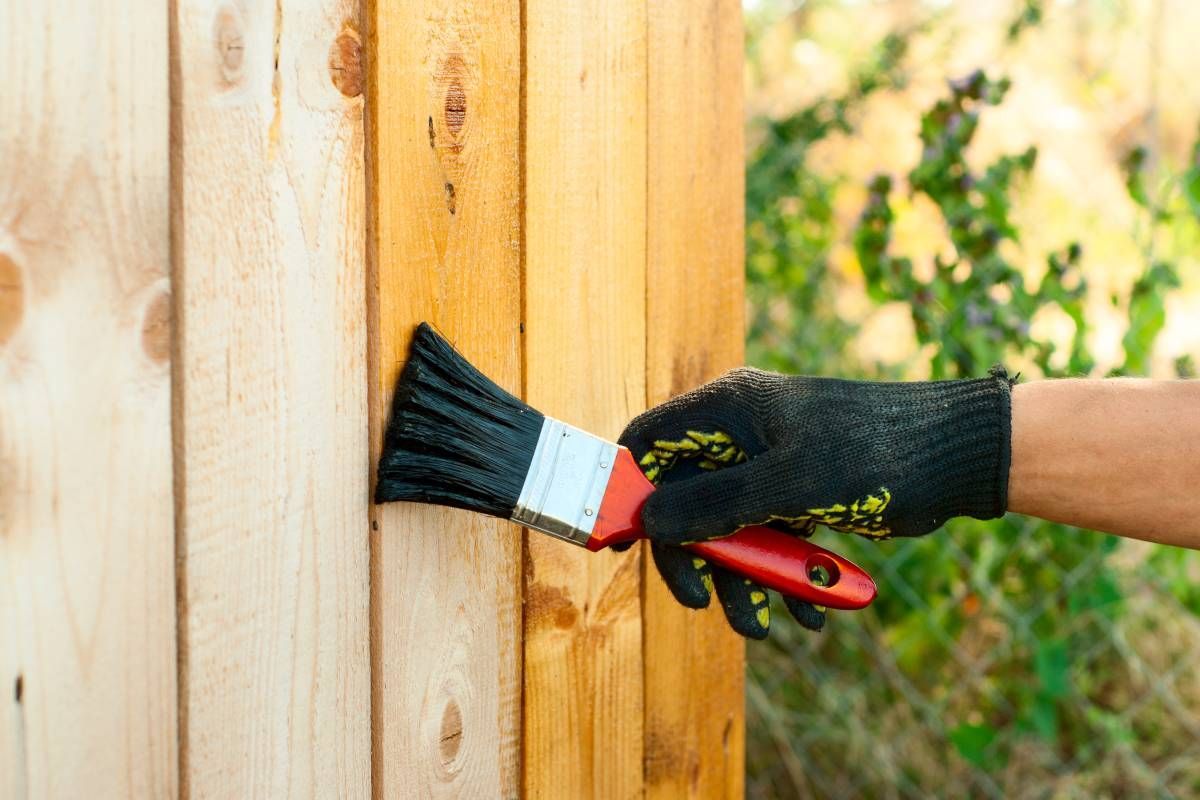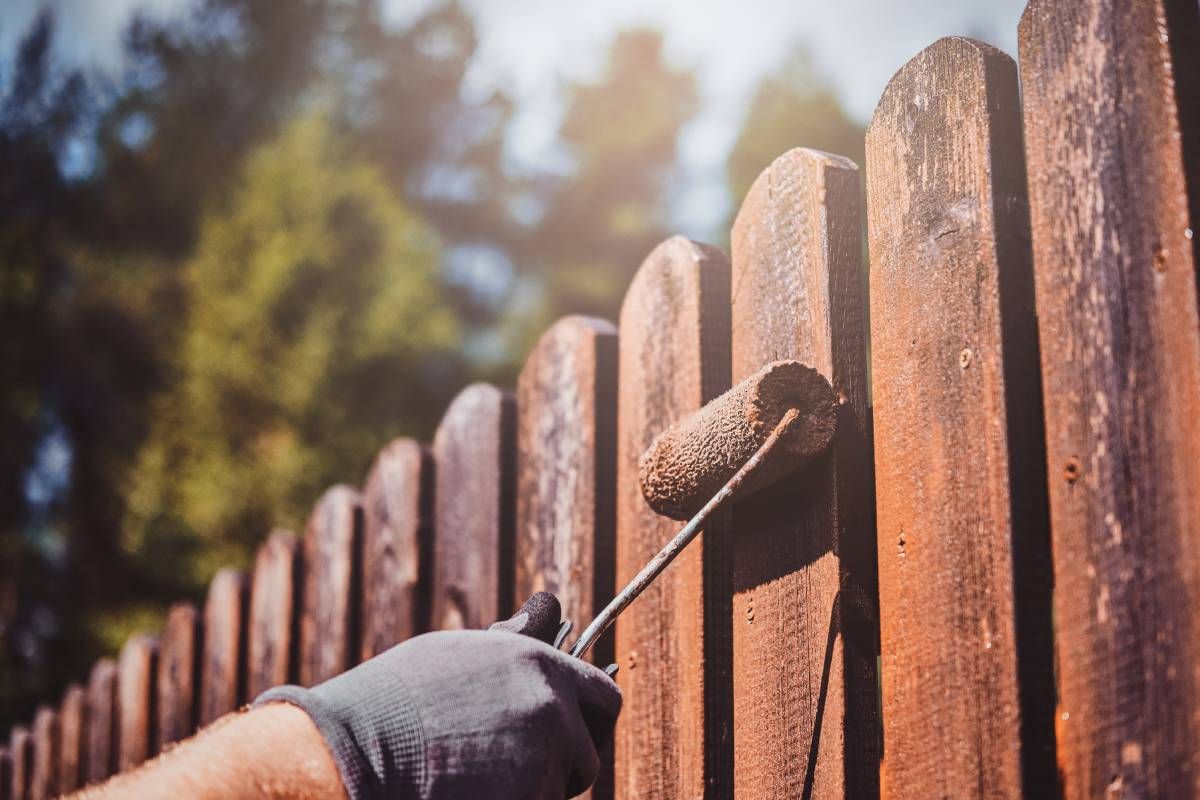Fence painting and staining
After you install a fence, it requires a refresh now and then. Fence painting and staining are vital for maintaining its appearance and structural integrity. Whether reviving an old fence or preserving a new one, understanding the process and benefits of painting and staining helps you make informed decisions for your outdoor space. All About Painting provides residential and commercial fence painting, and our pros are happy to share some helpful tips.
The Importance of Fence Painting & Staining
One primary purpose of painting or staining your fence is to protect it from the elements. Over time, exposure to sunlight, rain, and temperature fluctuations can cause wood to deteriorate, leading to rot, warping, and discoloration. A protective layer of paint or stain acts as a barrier, preventing moisture from penetrating the wood and reducing the risk of decay.
Beyond protection, painting or staining your fence can dramatically improve its appearance. The right finish can seriously boost your curb appeal, whether you prefer the classic look of a crisp white fence or the rich tones of stained wood.
Investing in painting or staining your fence also extends its lifespan. Adequately sealed wood is less susceptible to damage from insects, fungi, and weathering, so your fence will remain sturdy and attractive for years.


Fence Painting: A Step-by-Step Guide
Preparation
As with painting, proper preparation is key to a successful staining project. Clean the fence thoroughly to remove dirt, mildew, and any previous stain or finish. Use a wood cleaner or brightener to restore the wood's natural color and remove any gray or weathered areas. Allow the fence to dry completely before applying the stain.
Once the surface is clean and dry, sand any rough areas to create a smooth, even surface for painting.
Priming
For best results, apply a coat of primer to the entire surface of the fence. It helps the paint adhere better and provides additional protection against moisture and UV damage. Be sure to choose a primer specifically formulated for outdoor use and follow the manufacturer's instructions for application.
Painting
Begin by brushing around the edges, then use a roller to apply paint to the larger sections of the fence.
Work in small sections, applying paint evenly and covering the entire surface. Allow the first coat to dry completely before applying a second one for added durability and coverage.
Fence Staining: A Step-by-Step Guide
Painting
As with painting, proper preparation is key to a successful staining project. Clean the fence thoroughly to remove dirt, mildew, and any previous stain or finish. Use a wood cleaner or brightener to restore the wood's natural color and remove any gray or weathered areas. Allow the fence to dry completely before applying the stain.
Staining
Apply the stain using a brush, roller, or sprayer, working toward the wood grain. Start at the top of the fence and work your way down, applying the stain in thin, even coats.
Be sure to overlap each stroke slightly to avoid streaks or uneven color. Allow the first coat to dry according to the manufacturer's instructions before applying additional coats as needed.
How to Choose Paint or Stain for a Fence
We recommend selecting a product that enhances your fence's appearance while providing durable protection against the elements.
Staining requires a porous surface like wood to penetrate and adhere, enhancing the natural grain. Non-wood materials may not be porous, preventing stain absorption and adhesion. Attempting to stain surfaces like metal or plastic would result in ineffective application–these fences require paint.
When choosing paint or fence stain colors, consider the fence material, desired appearance, and level of protection needed. For a natural look, transparent stains showcase wood grain, while solid stains offer more coverage and color options. Opt for exterior-grade paints and stains designed to withstand weathering and UV exposure.
Consider the maintenance required for each option; paint typically lasts longer but may require more upkeep. Test samples on a small fence area to ensure the color and finish meet your expectations.
Contact All About Painting Can for Quality Fence Painting and Staining
Fence painting or staining is a fantastic way to refresh your home or business's exterior without painting the entire building. Our experienced fence painters will come out and give an estimate, determine the size of the project, and provide a quote.
We'll prepare the surface and apply a new paint or stain, whether the fence is wood, metal, or another material. Leave all the work to us; our exceptional painters and tools make a difference. Contact us for professional fence painting and staining near Johnson City, Tennessee.


